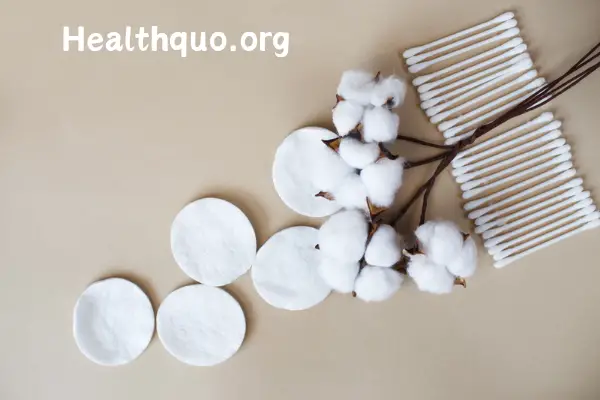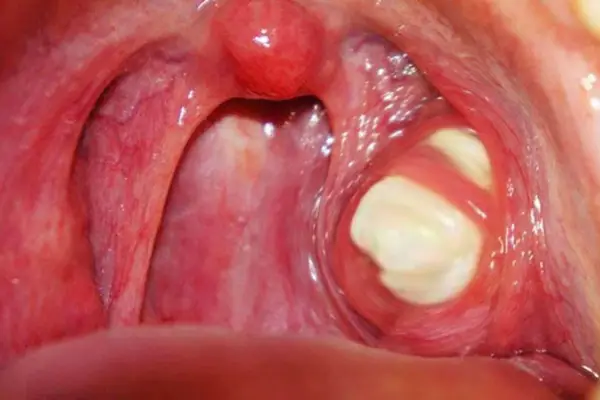The body typically recognizes foreign objects, like a swallowed cotton ball, as potential threats. The initial response might be coughing or gagging, as the body reflexively attempts to expel the object.
If the cotton ball passes into the stomach, it might not be easily digested, as cotton is primarily cellulose, a substance that human digestive enzymes struggle to break down.
Depending on the size of the cotton ball, there is a risk of choking or obstructing the airway or digestive tract. Larger cotton balls could potentially get stuck in the esophagus or other parts of the digestive system.
The soft and malleable texture of cotton means it can compress and change shape, potentially causing unpredictable movements through the digestive system. It could also potentially adhere to the mucous membranes of the esophagus, causing discomfort or irritation.
Cotton’s high absorbency can be a concern. Once inside the digestive system, it can absorb liquids, including digestive juices. This might lead to an expansion of the cotton ball, increasing the risk of obstruction or impaction. Additionally, the absorption of digestive juices could potentially interfere with normal digestion.
Swallowing a cotton ball that contains pesticide residues from farming or chemicals from processing, like bleach or fragrances, introduces these potentially toxic substances like DDT, atrazine or dioxins into the digestive system. This poses health risks, as these chemicals are harmful when ingested.
The most significant risk is the cotton ball causing a blockage in the intestines, which could lead to severe complications like pain, vomiting, constipation, and in severe cases, infection.
Rarely, indigestible material like cotton can lead to the formation of a bezoar, a solid mass that can cause blockages and require medical intervention to remove.
Immediate Steps to Take
It’s important not to induce vomiting. This is because vomiting could cause the cotton ball to become lodged in the esophagus or cause additional harm to the throat or esophageal lining.
Check if the person is able to breathe normally. If they are choking or having difficulty breathing, seek emergency medical help immediately.
If the person is not choking and can swallow normally, drinking a small amount of water may help to moisten the throat and potentially aid the passage of the cotton ball through the digestive system. However, this should be done cautiously and in small sips.
Avoid eating solid foods for a while as they could exacerbate the situation, potentially causing the cotton ball to become lodged in the digestive tract or form bezoar. If you must eat solid food, avoid certain foods, majorly vegetables and fruits like sunflower, celery, prunes, pumpkin, raisins, beets and more.
Signs That Indicate Immediate Medical Attention Is Necessary
Difficulty Breathing or Choking: If the person is having trouble breathing, is coughing excessively, or shows signs of choking, seek emergency medical assistance immediately.
Pain or Discomfort: Abdominal pain, chest pain, or a feeling of something being stuck in the throat or chest are warning signs. Pain may indicate a blockage or irritation caused by the cotton ball.
Vomiting or Gagging: If the person starts to vomit involuntarily or cannot stop gagging, this could be a sign that the cotton ball is causing a blockage or irritation.
Inability to Swallow: Difficulty in swallowing or a sensation that food and liquids are not passing normally could indicate that the cotton ball is obstructing the digestive tract.
Change in Bowel Movements: Watch for signs like constipation or an inability to pass stool, as these could indicate a blockage in the intestines.
Signs of Distress: General signs of distress, such as severe anxiety, confusion, or sweating, should also be taken seriously.
When to Seek Medical Attention
Breathing Difficulties: If you experience trouble breathing, choking, or a sensation that something is stuck in your throat or chest, seek emergency medical care immediately.
Persistent or Severe Symptoms: If symptoms such as abdominal pain, nausea, vomiting, or gagging persist or worsen, it’s important to get medical help. These symptoms could indicate an obstruction or irritation in the digestive tract.
Changes in Bowel Habits: If you experience constipation, inability to pass gas, or notice any changes in your bowel movements, this could indicate a blockage in the intestines.
Signs of Intestinal Blockage: Severe abdominal pain, bloating, vomiting (especially if it’s green or brown), and a swollen abdomen are signs of a possible intestinal blockage.
Signs of Infection or Severe Inflammation: Fever, severe pain, or signs of sepsis (such as rapid heart rate, rapid breathing, or confusion) are urgent medical issues.
If In Doubt: If you are uncertain about the severity of the situation or if you have any concerns, it’s always better to err on the side of caution and seek medical advice.
What to Expect During a Medical Evaluation
Medical History and Physical Examination: The doctor will ask about the incident, including when it happened, the size of the cotton ball, and any symptoms you’ve experienced. A physical examination will be conducted to check for signs of distress, abdominal pain, or obstruction.
Diagnostic Tests: Depending on the symptoms and physical exam findings, the doctor might order diagnostic tests such as X-rays, ultrasound, or a CT scan to view the digestive tract and identify any blockages or other complications.
Assessment of Breathing and Airway: If there are any breathing difficulties, the medical team will assess and ensure that the airway is clear and functioning properly.
Blood Tests: Blood tests might be conducted to check for signs of infection, inflammation, or other related complications.
Treatment Plan: Based on the findings, the medical team will develop a treatment plan. This may range from observation and supportive care (like hydration and pain management) to more active interventions, such as endoscopy to remove the object or surgery in severe cases of obstruction.
Follow-Up Care: Instructions for follow-up care, including signs to watch for and when to return for further evaluation, will be provided.
General Outlook
If the ingested cotton ball is small and untreated, it’s usually not a cause for major concern. The human digestive system, while not able to break down the cotton (since it’s primarily cellulose), can often move it through the gastrointestinal tract. Most people will experience little to no symptoms, and the cotton ball will likely pass through their system naturally.
However, there is still a slight risk of poisoning with most store-bought cotton balls that have been processed with toxic chemicals. These chemicals might include bleaches or fragrances that aren’t intended for ingestion. In these cases, while the prognosis is still generally good as accidental ingestions often involve little amounts, there is a greater potential for mild gastrointestinal irritation or allergic reactions, depending on the sensitivity of the individual and the types of chemicals involved.
In the rare event that the cotton ball is large or the person has a pre-existing gastrointestinal condition, there’s an increased risk of intestinal obstruction or more severe irritation. This scenario would require closer monitoring and potentially medical intervention.





